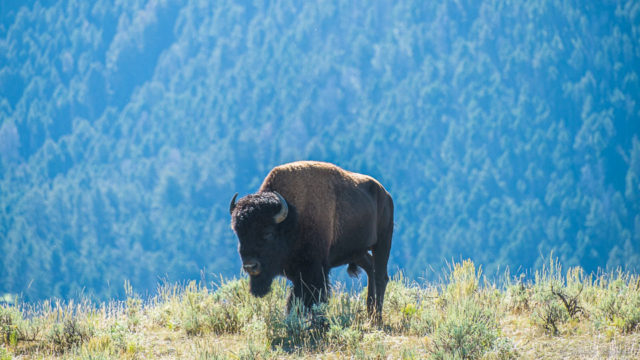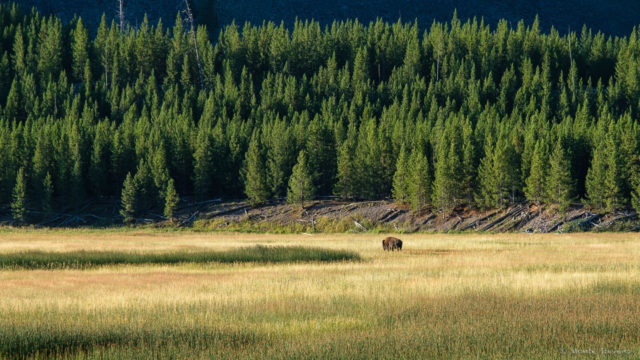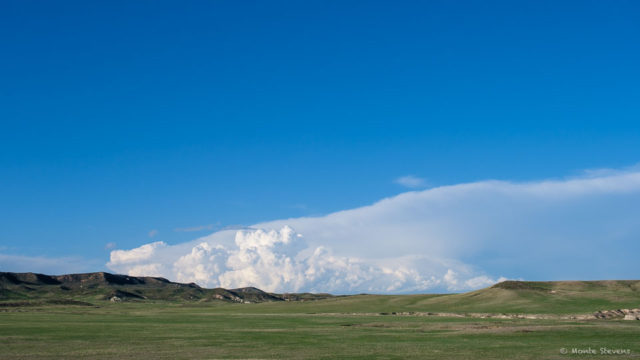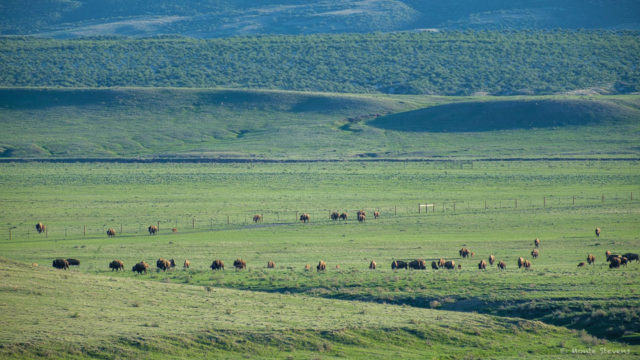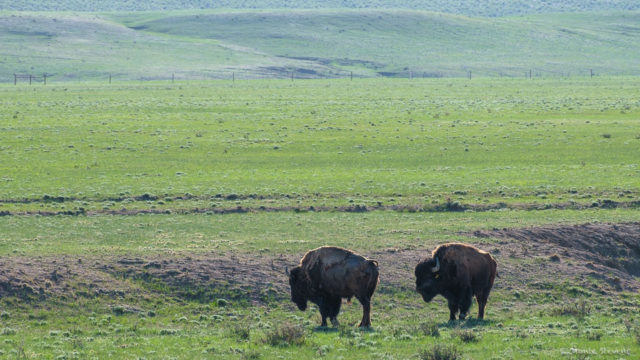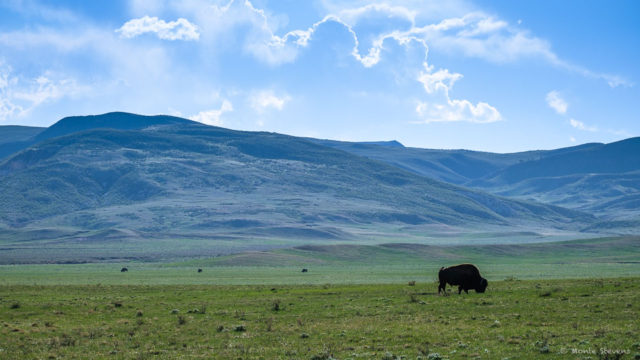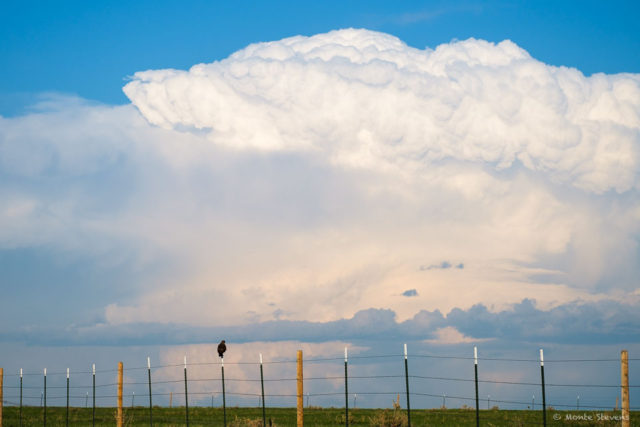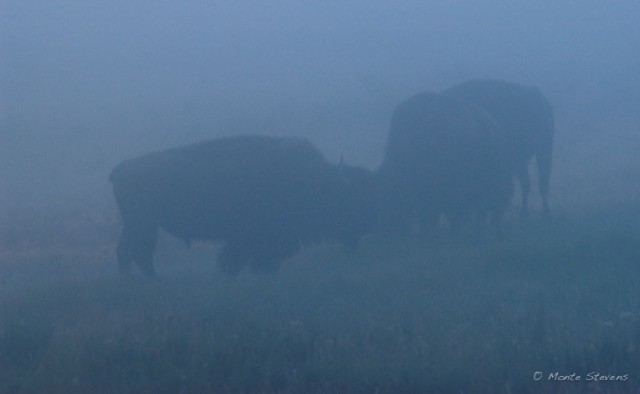Bison are so iconic of Yellowstone National Park, and the Black Hills. They appear peaceful, unconcerned, even lazy, as in this image, yet they may attack anything, often without warning or apparent reason. They can move at speeds up to 35 mph and cover long distances at a lumbering gallop. So make sure you can outrun the person you are with! As I look at this image I wonder how many photographs have been taken of this bison.
-
-
Hard to imagine…
American Bison once numbered in the millions, perhaps between 25 million and 60 million by some estimates, and they were possibly the most numerous large land animal on earth. However, by the late 1880s, they had been hunted to near extinction throughout North America. The Yellowstone Park bison herd was the last free-ranging bison herd in the United States being the only place where bison were not extirpated. The Yellowstone Park bison herd is descended from a remnant population of 23 individual bison that survived the mass slaughter of the 19th century in the Pelican Valley of Yellowstone Park. To assist in the species’ revival, in 1896 the United States government obtained one bull and seven cows from the Lincoln Park Zoo bison herd for Yellowstone. In 1902, a captive herd of 21 Goodnight plains bison was introduced to the park and then moved to the Lamar Valley and managed as livestock until the 1960s, when a policy of natural regulation was adopted by the park. Yellowstone National Park has large areas of alpine meadows and grass prairie and this provides a nearly optimum environment for American bison who live in river valleys, and on prairies and plains. Their typical habitat is open or semi-open grasslands, as well as sagebrush grasslands, semi-arid lands, and scrublands. Some lightly wooded areas are also known historically to have supported bison. Bison will also graze in hilly or mountainous areas where the slopes are not steep. It’s hard to imagine those numbers of bison especially when you look at the lone bison in the above image. (Information from Wikipedia.)
- animals, Avian, clouds, landscape, natural areas, poetry, Soapstone Prairie Natural Area, writing/reading
Experiencing Nature’s Touch
Storm clouds were on the eastern horizon enticing me to head out of town to find open areas for an image or two. Before I knew it I was on a course heading north to the Soapstone Natural Area. I did get a few cloud images but I also was gifted with a few unexpected images of this beautiful landscape and a few bison images.
This natural area is the biggest one the City of Fort Collins maintains. It is 48 square miles of wide open vistas, nearly pristine grasslands, miles of trails and cultural resources. The trails are a mix for hiking, biking and horses. Thankfully they have restricted access to some areas to keep them free of man’s destructive tendencies. During excavations in the 1930s by the Smithsonian and Colorado Museum of Natural History they conclusively dated human habitation in in this area to at least 10,000 years. You can go online and find many stories about the early homesteaders, mostly ranchers and sheepherders, in this area as well as the American Indians.
In November of 2015 they introduced a herd of bison on over 1,000 acres of pasture land which is inaccessible to the public. However, the main entrance road, Rawhide Flats Road, and Cheyenne Rim Trail, follow along the edge of this pasture which gives an opportunity to observe them and even get a few photographs, if they are close enough. I find these animals so intriguing.
And of course this area is a haven for my favorite bird the meadowlark. It is also a place for many other birds, such as red-tailed hawks. The Fort Collins Audubon has a bird checklist that’s two pages long. You will find coyotes, fox, rabbits, prairie dogs, deer, antelope, and elk and of course a few snakes. I don’t go there often enough and it is always an uplifting experience for my soul when I go. It’s nice to come home with a few images but just spending time there, listening to the silence, transforms me in some wonderful way. Experiencing nature’s touch.
ominous storm clouds in the east
ms
rain, hail and wind hidden within
we watch in silence, the hawk and I -
Bison
This is from 2003 and a trip made to Yellowstone National Park. Lamar Valley, one of my favorite places in the park.
